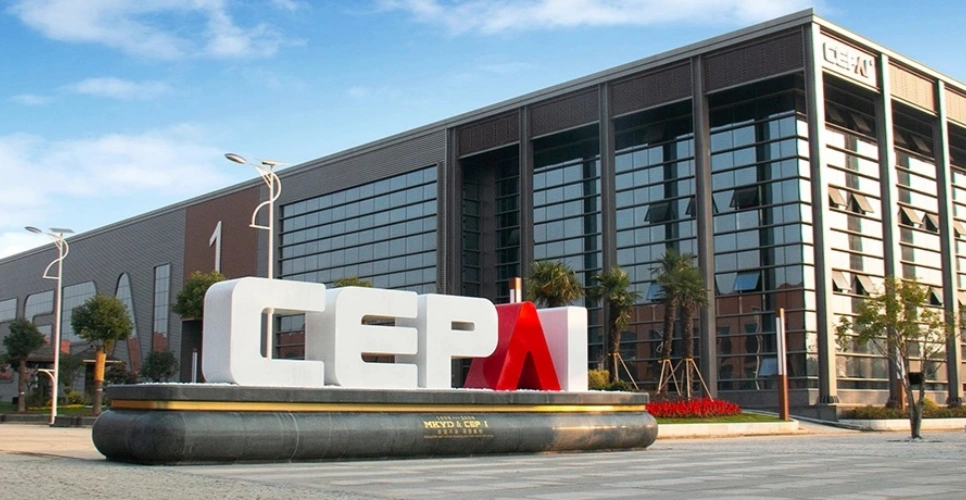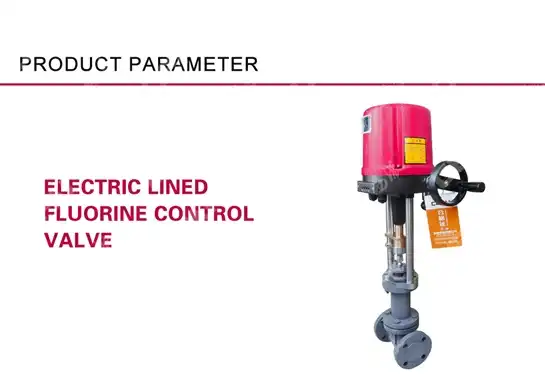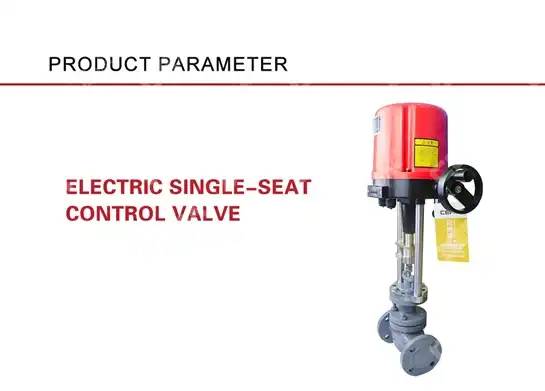Industrial control valves serve as significant components in mechanical robotization, controlling stream, weight, and temperature in batch forms, essential to manufacturing and production lines. At their center, these valves balance liquid stream inside pipelines by reacting absolutely to signals received from controllers, guaranteeing frameworks work within ideal effectiveness and security guidelines. Understanding what control valves are and their imperative part in mechanical mechanization reveals how businesses maintain consistency, security, and productivity in complex production environments.
What is an Industrial Control Valve?
An industrial control valve is a mechanical device utilized to oversee and control the flow of liquids such as gases, fluids, or slurries within a mechanical system. It works as the last component in the control circle, altering the stream rate by opening, closing, or throttling the way in response to received signals from control frameworks. This balance is basic in keeping up prepared factors such as weight, temperature, and liquid level within a predefined range, guaranteeing smooth and secure operations. Control valves coordinated actuators, valve positioners, and flag transducers to accomplish exact corresponding control through the computerization system.
The Problem Control Valves Solve and the Needs They Fulfill
Industrial control valves require accuracy in dealing with energetic liquid mechanics, regularly subject to changing operational conditions. Without control valves, keeping up craved stream rates and weights would depend on manual mediation, leading to wasteful aspects, security dangers, and conflicting item quality. Control valves relieve these challenges by mechanizing stream control, decreasing human error, and empowering real-time handle alterations. This robotization not as it were fulfills strict administrative and security necessities but also bolsters continuous production and productive energy utilization over businesses such as chemical manufacturing, oil refining, pharmaceuticals, and control generation. With mechanized valve calibration and input frameworks, control valves improve performance and minimize downtime, meeting the rigorous requirements of advanced mechanical applications. The significance of liquid elements in valve plan guarantees optimized stream designs, lessening turbulence and weight drops that seem to jeopardize framework integrity.

Core Features & Functionality of Industrial Control Valves
The hallmark of industrial control valves lies in their progressive actuator innovation, including pneumatic, pressure-driven, or electric actuators that change control signals into exact mechanical development. These actuators work synergistically with valve positioners, which alter the valve's opening point based on criticism to guarantee correct positioning. Flag transducers convert overprepared estimations into standardized electrical or pneumatic signals that the valve’s control framework interprets. Key functionalities incorporate corresponding stream control, empowering smooth balance over the valve's run or maybe than basic open/close operation. Throttle valves work in conjunction with stream meters and weight controllers to keep up with set factors inside tight tolerances, administered by PID controllers for versatile and energetic control. Security valves coordinate inside control valve congregations, act as fail-safes against weight spikes, ensuring expensive gear and personnel. Additionally, further checking capabilities allow administrators to watch valve execution and prepare states without physical presence, upgrading reaction times and diminishing the require for manual assessments. Advanced criticism frameworks calibrate valves persistently, keeping up execution keenness and amplifying valve lifecycle in unforgiving mechanical environments.
Technology Under the Hood
Industrial control valves utilize a combination of mechanical design, hardware, and liquid control science. Actuators change over input signals into mechanical drive through pneumatic weight, water-powered liquid movement, or electric engine revolution. Valve stems connected to the actuator control the valve disk or plug, successfully controlling the liquid passage. Valve positioners play an indispensable part by measuring the valve's position and altering actuator commands to ensure exact reaction to control signals. This closed-loop criticism instrument guarantees negligible deviation from setpoints, improving the control loop’s accuracy. Modern control valves consolidate solenoid valves for fast initiation and security conventions. The integration of flag transducers deciphers physical marvels like weight and stream into electrical signals justifiable by the mechanization frameworks. Progressed materials and coatings progress valve toughness, resistance to erosion, and high-temperature tolerance.
Key Advantages of Industrial Control Valves
Industrial control valves convey numerous advantages significant to strong mechanical robotization. Their remarkable toughness stems from high-grade materials and plan planning, guaranteeing dependable work beneath demanding conditions. Exactness in stream and weight balance implies upgraded item quality and prepare consistency, decreasing squander and operational costs. The company’s solid commitment to R&D comes about in exclusive developments secured by licenses, fortifying technological obstructions against competitors. Such advancements move forward actuator responsiveness, valve calibration exactness, and empower cleverly inaccessible monitoring. CEPAI Group’s comprehensive benefit offerings—ranging from pre-sales meetings and customized arrangements to establishment, commissioning, and after-sales maintenance—ensure that clients get end-to-end back. Careful quality administration complying with ISO measures and strict testing conventions ensures valves meet or surpass client expectations.
Potential Limitations and Considerations
Despite their focal points, industrial control valves show considerations that clients must assess. Beginning securing and establishment costs for high-quality valves with coordinated shrewd advances can be comparatively considerable. Complex frameworks require prepared faculty for establishment, valve calibration, and progressing support to maintain framework keenness and safety. Applications including exceedingly erosive or destructive liquids may require specialized valve materials, including to in general costs. Moreover, coordination valves into existing handle mechanization frameworks might show compatibility challenges without legitimate specialized consultation. Understanding these limitations allows informed decision-making and planning, ensuring the selected valve solutions align with operational goals and budget constraints.

Industrial Control Valves Versus the Competition
Compared to straightforward on/off valves, industrial control valves give unparalleled exactness in liquid control, empowering relative control and energetic alteration based on real-time process input. When compared with manual valves, they offer robotization capabilities that altogether decrease labor and error. Among major competitors, CEPAI Group recognizes itself through licensed actuator innovation and a broad product range, coupled with customized benefit bundles that numerous producers need. Other producers might offer lower-cost arrangements but frequently compromise on toughness, exactness, or after-sales support. The emphasis on ISO quality frameworks and thorough multi-stage review forms positions CEPAI’s valves as dependable resources in basic mechanical situations, building long-term client trust.
Target Audience and Ideal Use Cases
Industrial fields that benefit most from progressed control valves include chemical processing plants, oil and gas refineries, pharmaceutical production lines, and control era offices. Administrators in these segments request exact stream and weight control to guarantee security, compliance, and efficiency. Process engineers, upkeep directors, and automation professionals speak to key groups of onlookers assessing industrial control valve arrangements. Their intrigue lies in arrangements that coordinated consistently into control circles administered by PID controllers and include further checking for upgraded operational oversight. Typical utilize cases include weight control in pipelines, stream throttling in blending and bunching forms, and security shutdown instruments activated naturally to avoid system failure. These applications emphasize the indispensable role of control valves in keeping up prepared judgment and operational continuity.
Conclusion & Future Outlook
Control valves play a crucial part in mechanical computerization by empowering exact flow control and prepare direction, supporting efficiency and security over differing businesses. With continuous headways in actuator innovation, flag preparation, and further checking, these valves proceed to advance, conveying more intelligent, tougher, and exceedingly precise arrangements. As businesses seek sustainability and digital transformation, industrial control valves will indeed become more indispensable, coordinating with IoT and AI-driven prepare control frameworks to optimize execution and diminish environmental impact.
FAQ
Q1: What types of actuators are commonly used in industrial control valves?
A: Pneumatic, hydraulic, and electric actuators are the most common. Pneumatic actuators use compressed air for motion, hydraulic actuators use fluid pressure, and electric actuators employ motors—all designed to provide precise valve positioning.
Q2: How do control valves improve industrial safety?
A: They regulate pressure and flow accurately, thereby preventing overpressure conditions and ensuring safe operating limits. Integrated safety valves and feedback systems enable rapid response to abnormalities, reducing risks of accidents.
Q3: Can control valves be integrated with remote monitoring systems?
A: Yes. Modern industrial control valves often feature smart sensors and communication modules, allowing real-time remote monitoring and diagnostics, improving maintenance response and operational transparency.
Q4: What factors influence the selection of a control valve for a particular application?
A: Key factors include fluid type, pressure and temperature ranges, required flow capacity, material compatibility, actuator type, and integration with existing control systems. Cost and maintenance considerations also play roles.
Q5: How does CEPAI Group ensure the quality of its industrial control valves?
A: CEPAI implements strict ISO quality systems, conducts comprehensive inspections from raw materials through final testing, and invests in modern testing equipment. Dedicated inspectors verify compliance with customer and international standards to achieve near-zero defect rates.
Q6: What industries most frequently use industrial control valves?
A: Industries such as chemical manufacturing, petrochemicals, pharmaceuticals, food and beverage processing, water treatment, and power generation widely utilize these valves due to their essential role in process automation.
Where to Buy Industrial Control Valve?
When sourcing reliable industrial control valves that combine exceptional durability with cutting-edge innovation, CEPAI Group Co., LTD., stands out as a trusted global partner. Backed by extensive R&D, patented technologies, and robust quality management systems, CEPAI offers tailored solutions alongside comprehensive pre-sales consultation and after-sales service. To learn more or request a quote, contact us at cepai@cepai.com. Our experienced team is ready to support your process automation needs and guide you towards the ideal valve choice.
For details, please refer to the website: valveblog.jscepai.com
References
1. Horak, G.J. Advances in Valve Technology for Industrial Automation – Journal of Process Control, 2021.
2. Smith, T. Fluid Dynamics and Control Valve Design Principles – Industrial Engineering Publications, 2019.
3. Johnson, R. Automation Systems and Control Loop Optimization – Automation Today, 2020.
4. Kumar, P. Innovations in Actuator Technologies for Enhanced Valve Performance – Valve World, 2022.
5. Lee, S. The Role of PID Controllers in Precision Flow Control – Control Engineering Review, 2018.
6. Williams, M. Integrated Remote Monitoring Solutions for Control Valves – Industrial Automation Quarterly, 2023.




